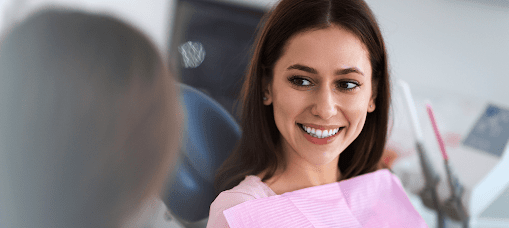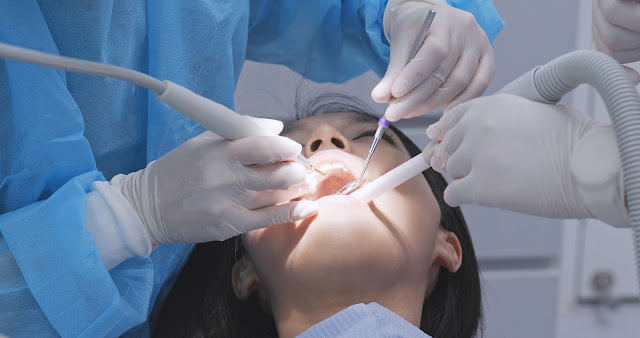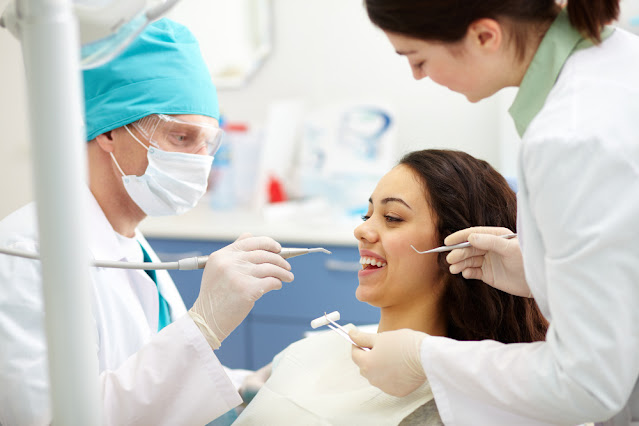Best General And Family Dentist in Texas
Best General And Family Dentist in Texas
General Dentistry - Castellano & Carpenter Dental Associates serve adults and seniors in Laredo, Texas, and the surrounding cities of Zapata, Carrizo Spring, Hebbronville, and Coutula, Texas.
We would like to personally welcome you to our practice. We hope provides you with valuable information about our office as well as the exceptional service and care you will receive. If you have any questions that were not answered, please contact us. My staff look forward to seeing and visiting with you soon!"
Dr. Vanessa Carpenter completed her dental school training at the University of Texas Dental Branch in Houston, Texas in 1990. Upon receiving her dental degree, she went into private practice. She is a founding partner at Castellano & Carpenter Dental Associates.
Dr. Vanessa Carpenter is a general & cosmetic dentist in Laredo, TX, providing quality dental care for adults and seniors. Laredo family dentist near you. We welcome every patient that has comes through our door with a warm friendly smile. From the moment you step into our office, we want you and your family to rest at ease and know you will receive the best care possible.
Dr. Carpenter is a long-time member of the American Dental Association, the American Academy of Pediatric Dentistry, the Texas Dental Association, and the Laredo District Dental Society. She currently serves on the Board of Trustees of the American Academy of Pediatric Dentistry as a general dentist member, where she helps guide care and advocacy for children.
She is a graduate of the Las Vegas Institute for Cosmetic Dentistry where she honed her cosmetic and restorative skills. She is an advocate for continuing education and spends a lot of her extra time improving her clinical skills.
Dr. Carpenter was selected and participated in Leadership Laredo, and subsequently selected and attended Leadership Texas. She has served on the Board of Directors of the Boys and Girls Club of Laredo and has held various roles with the Make-A-Wish Foundation and the Laredo Women’s Shelter. In her free time, Dr. Carpenter enjoys reading, relaxing, and shopping. She is married and has two boys, Nicolas and Edgar.
We are providing a list of services to our patients.
Bleaching:
Bleaching, also called tooth whitening, is a procedure that brightens teeth that are discolored, stained, or have been darkened due to injury. In-office bleaching is safe and effective, and patients are very pleased with the results. Prior to getting your teeth bleached, the doctor will discuss your desires and the results that can be achieved.
The total process takes about an hour. For in-office bleaching, a chemical solution is applied to the teeth and a special light is placed on the teeth for a brief period of time to activate the bleaching solution. The process is usually done 2-3 times to achieve the desired color change. It is not uncommon for the teeth to be slightly sensitive following bleaching treatment.
Schedule a consultation to find out how white your teeth can be.
Bruxism (Grinding):
Grinding often referred to as bruxism is a habit of grinding or clenching the teeth. Clenching means you tightly hold your top and bottom teeth together. Grinding is when you slide your teeth back and forth over each other. Bruxism can happen at any age to children or adults. People who suffer from bruxism may have symptoms that include headache, a sore jaw, frequent toothaches, facial pain, loose teeth, or earache.
The causes of bruxism are not known. Stress, sleep disorders, and abnormal bite are some causes that might play a role. The doctor can diagnose bruxism by looking at unusual wear patterns on your teeth and by assessing your symptoms.
Bruxism treatment depends on each individual’s symptoms. Treatment could include stress reduction, a protective nightguard to lessen the effects of grinding or clenching while you sleep, medications for pain and muscle spasms, fillings, or other dental treatment to repair damaged teeth.
If you feel you may suffer from bruxism, pay attention to your symptoms (and what causes them to get worse) and discuss them with your doctor.
Outpatient General Anesthesia:
Outpatient General Anesthesia is recommended for apprehensive children, very young children, and children with special needs that would not work well under conscious sedation or I.V. sedation. General anesthesia renders your child completely asleep. This would be the same as if he/she was having their tonsils removed, ear tubes, or hernia repaired. This is performed in a hospital or outpatient setting only. While the assumed risks are greater than that of other treatment options, if this is suggested for your child, the benefits of treatment this way have been deemed to outweigh the risks. Most pediatric medical literature places the risk of a serious reaction in the range of 1 in 25,000 to 1 in 200,000, far better than the assumed risk of even driving a car daily. The inherent risks if this is not chosen are multiple appointments, potential for physical restraint to complete treatment and possible emotional and/or physical injury to your child in order to complete their dental treatment. The risks of NO treatment include tooth pain, infection, swelling, the spread of new decay, damage to their developing adult teeth and possible life threatening hospitalization from a dental infection.
Crowns:
A crown is a dental restoration that covers or “caps” a tooth to restore it to its normal size shape and function. Its purpose is to strengthen or improve the appearance of a tooth. Crowns can restore a tooth with insufficient tooth structure for a filling, protect a weak tooth from fracturing, restore a fractured tooth, cover a poorly shaped or discolored tooth, be used to attach a bridge to replace missing teeth, or cover a dental implant.
Crowns can be made from several different materials- metal alloys, composite resin, ceramics, porcelain, or a combination of these. The dentist will consider the tooth location, the position of the gum tissue, the amount of tooth that shows when you smile, and the function of the tooth. In most cases, a natural-looking crown that matches your tooth’s shape and shade of your existing teeth will be fabricated to restore your tooth.
Dental Veneers:
Dental veneers, sometimes called porcelain veneers, are very thin, custom-made shells of tooth-colored materials designed to cover the front surface of teeth to improve your appearance. These shells are bonded to the front of the teeth changing their color, shape, size, or length.
Dental veneers can be made from porcelain or from resin composite materials. Porcelain veneers resist stains better than resin veneers. They also better mimic the light-reflecting properties of natural teeth. You will need to discuss the best choice of veneer material for you with your dentist.
Veneers may be used to fix:
Teeth that are discolored because of:
root canal treatment
stains from tetracycline or other drugs
excessive fluoride
large resin fillings
other causes
Teeth that are worn down, chipped, misaligned, uneven, or irregularly shaped (for example, have craters or bulges in them)
Teeth with gaps between them (to close the space between these teeth)
Getting a dental veneer usually requires three trips to the dentist – one for a consultation and two to make and apply the veneers. One tooth or many teeth can undergo the veneering process at the same time.
You will discuss with the doctor the result that you are trying to achieve. During this appointment, your dentist will examine your teeth to make sure dental veneers are right for you and discuss the benefits and limitations of the treatment. They may also take X-rays and/or make impressions of your mouth and teeth.
To prepare a tooth for a veneer, your dentist will reshape the tooth surface, which is an amount nearly equal to the thickness of the veneer to be added to the tooth surface. You and your dentist will decide whether they numb the area before trimming off the enamel. Next, your dentist will make a model, or impression, of your tooth. This model is sent out to a dental laboratory, which makes your veneer. It usually takes 2-4 weeks for the veneers to come back from the laboratory. Temporary dental veneers can be used in the meantime.




Comments
Post a Comment